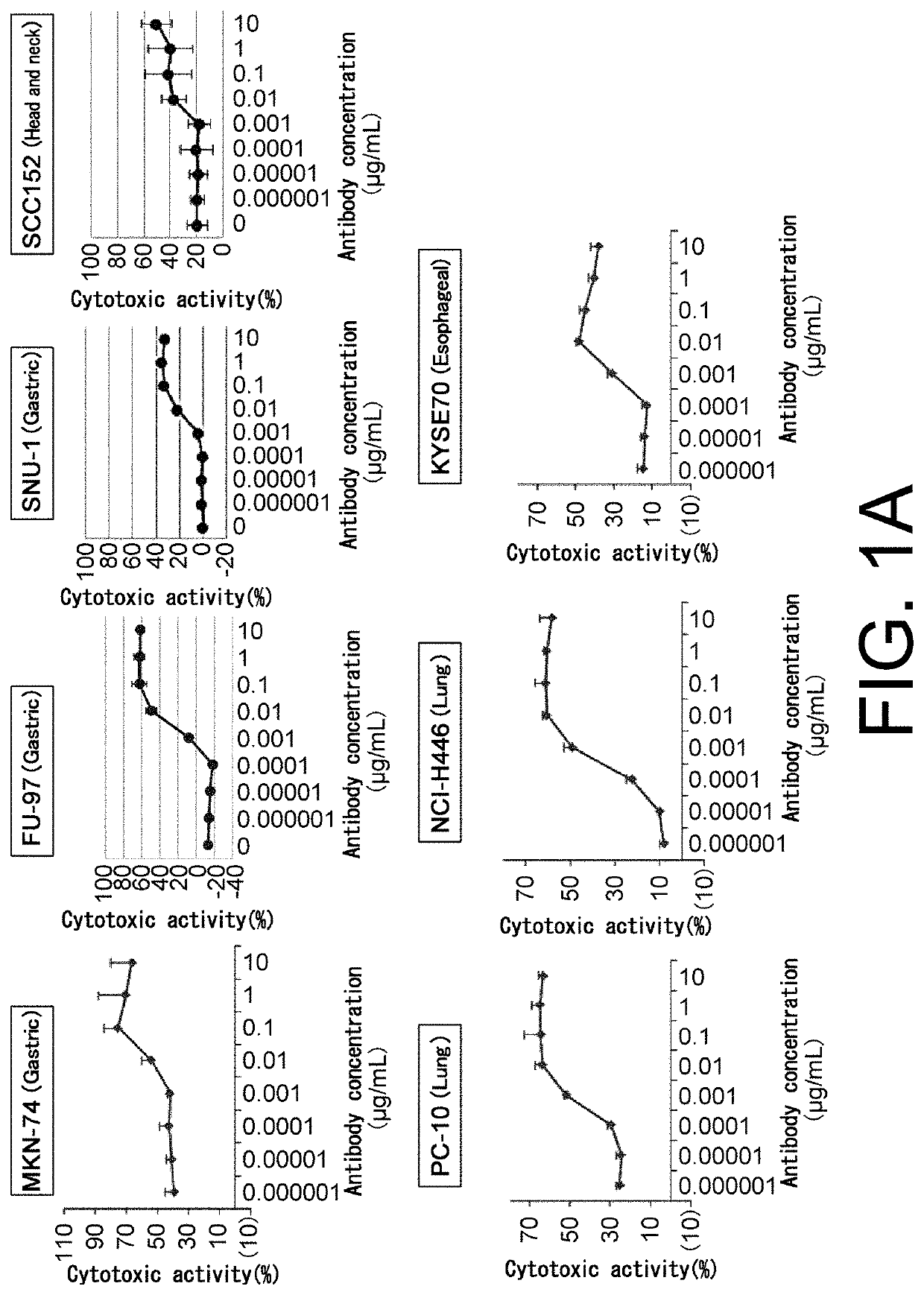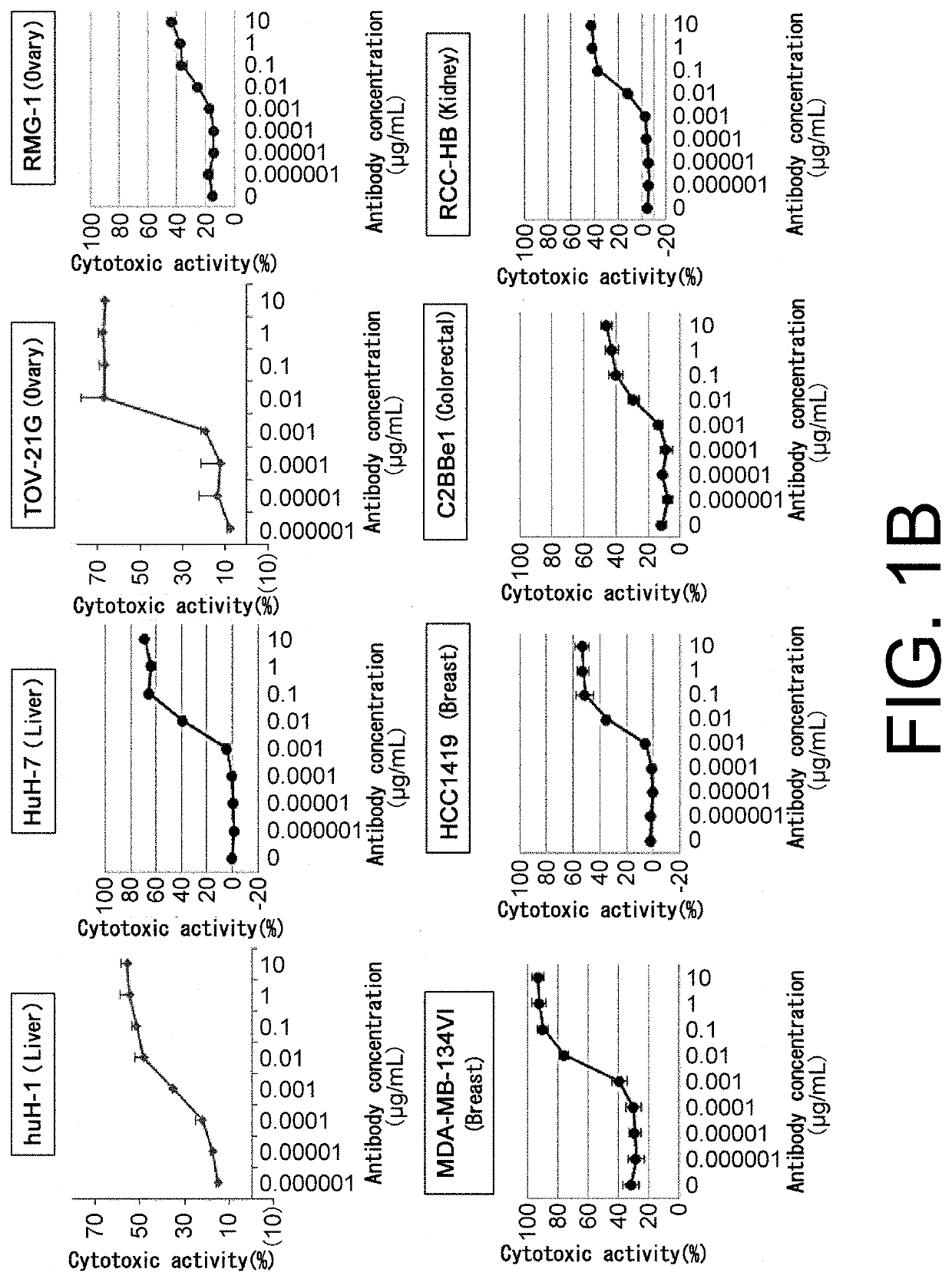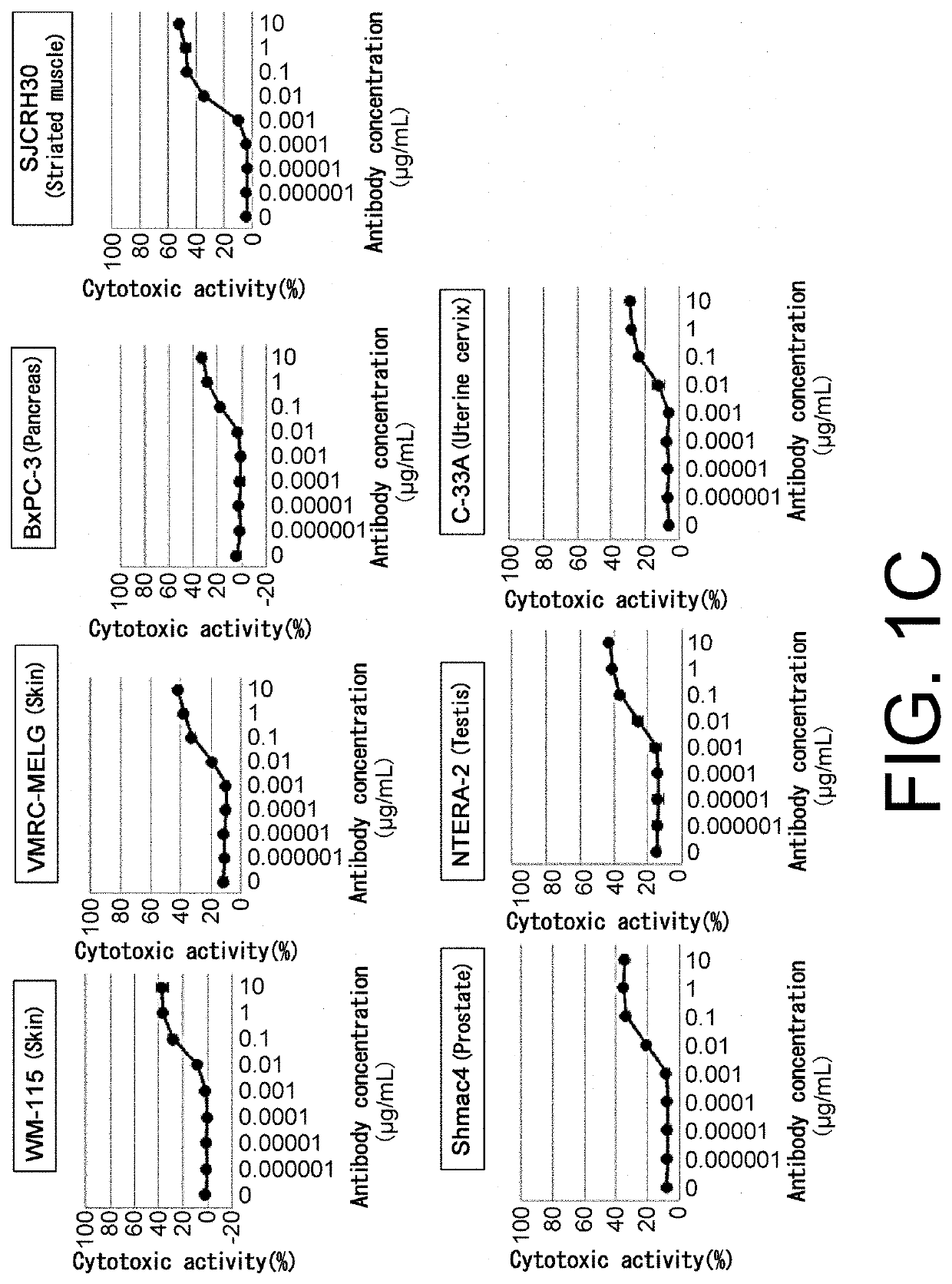Cell injury inducing therapeutic drug for use in cancer therapy
a cancer therapy and cell injury technology, applied in the direction of antibody medical ingredients, drug compositions, peptides, etc., can solve the problems of insufficient therapeutic effect achieved by administration of these antibodies, insufficient production of various cytokines in large quantities, and inability to achieve strong adverse reactions. , to achieve the effect of high efficiency
- Summary
- Abstract
- Description
- Claims
- Application Information
AI Technical Summary
Benefits of technology
Problems solved by technology
Method used
Image
Examples
example 1
[Example 1] T Cell-Dependent Cellular Cytotoxicity (TDCC Activity) of Each Test Antibody when Human Peripheral Blood Mononuclear Cells are Used as Effector Cells
[0634]TDCC activity of each test antibody was measured by the method described below. Human peripheral blood mononuclear cells (hereinafter referred to as human PBMCs) were used as effector cells and TDCC activity of each test antibody was measured as follows.
(1) Preparation of Human PBMC Solution
[0635]50 ml of peripheral blood was collected from a healthy person in Chugai Pharmaceutical Co. Ltd. using a syringe pre-loaded with 500 μl of 5000 units / 5 ml heparin solution. The peripheral blood diluted two-fold with PBS was divided into four aliquots and added to Leucosep tubes for lymphocyte separation (GE Healthcare) which had been loaded with 15 ml of Ficoll-Paque PLUS and centrifuged in advance. The separation tubes containing the aliquoted peripheral blood were centrifuged at a speed of 1000 g for 10 minutes at room temper...
example 2
[Example 2] Determination of the Amount of GPC3 Expressed on Cell Surface in Each Cell Line
[0639]Antibody binding capacity (ABC) of GPC3 on cell surface was calculated for each cell line by flow cytometry using QIFIKIT (DAKO).
[0640]After washing with CellWASH (BD Bioscience) supplemented with 0.5% BSA (hereinafter referred to as FACS / PBS), 5×105 cells of each cell line were prepared in 50 μl of a solution containing mouse anti-human GPC antibody or control antibody at a final concentration of 20 μg / ml and allowed to stand on ice for 30 minutes. The cells were washed with FACS / PBS. Then, 50 μl of a solution containing FITC-labeled goat anti-mouse IgG antibody which had been diluted 50-fold with FACS / PBS was added to the cells. The cells were allowed to stand on ice for 30 minutes. After washing with FACS / PBS, the cells were analyzed by flow cytometry. ABC was calculated by the method described in the instruction manual of QIFI KIT.
[0641]ABC of GPC3 on cell surface was calculated for ...
example 3
[Example 3] Evaluation of In Vivo Drug Efficacy (Anti-Human CD3ε Chain and Anti-Human GPC3 Bispecific Antibody) (Drug Efficacy Evaluation Studies when Antibodies of Sample Nos. 30, 31, 32, 33, and 38, or Antibodies of Sample Nos. 39 and 40 Described in Table 17 of Reference Example 3 are Used as a Single Agent)
[0642]In vivo drug efficacy was evaluated using tumor-bearing models of some of the lines in which cytotoxic activity was observed by the in vitro assay described in Example 1 as well as in vivo-passaged lines.
[0643]Methods called an NOD scid / T cell-injected model, a humanized NOG mouse model, and a human CD3εδγ gene-modified mouse model were used in the in vivo drug efficacy evaluation. Assay using an NOD scid / T cell-injected model was performed as follows. Some of the lines in which cytotoxic activity was observed in the in vitro assay and in vivo-passaged cell lines were transplanted into NOD scid mice. T cells expanded by culturing human PBMCs in vitro were injected into t...
PUM
| Property | Measurement | Unit |
|---|---|---|
| Fraction | aaaaa | aaaaa |
| Mass | aaaaa | aaaaa |
| Fraction | aaaaa | aaaaa |
Abstract
Description
Claims
Application Information
 Login to View More
Login to View More - R&D
- Intellectual Property
- Life Sciences
- Materials
- Tech Scout
- Unparalleled Data Quality
- Higher Quality Content
- 60% Fewer Hallucinations
Browse by: Latest US Patents, China's latest patents, Technical Efficacy Thesaurus, Application Domain, Technology Topic, Popular Technical Reports.
© 2025 PatSnap. All rights reserved.Legal|Privacy policy|Modern Slavery Act Transparency Statement|Sitemap|About US| Contact US: help@patsnap.com



